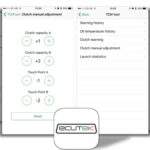Looking to record and analyze data from your vehicle’s OBD2 port? This guide provides a comprehensive overview of OBD2 data logging, its benefits, use cases, and how the CANedge data logger can help you harness the power of your car’s data. We’ll cover everything from basic principles to advanced applications, ensuring you have a solid understanding of how to effectively use an Obd2 Data Logger.
Connecting an OBD2 data logger is simple and allows access to a wealth of vehicle information.
Understanding OBD2 Data Logging
OBD2 (On-Board Diagnostics II) is a standardized system that allows access to a vehicle’s diagnostic and performance data. An OBD2 data logger records this data over time, providing valuable insights into vehicle operation. The process involves three simple steps:
- Configuration: Configure the OBD2 data logger to record specific parameters (PIDs) like speed, RPM, engine load, and more.
- Connection: Connect the logger to the vehicle’s OBD2 port using an OBD2 adapter.
- Data Retrieval: Extract the logged data from the device’s SD card and decode it using specialized software.
Key Benefits of Using an OBD2 Data Logger
An OBD2 data logger offers a range of benefits for various applications:
Analyze OBD2 data to optimize driving behavior, vehicle performance, and even individual part performance.
- Performance Optimization: Analyze driving patterns, vehicle performance, and identify areas for improvement in fuel efficiency or driving habits. OEMs can use this data to analyze the performance of new parts in real-world conditions.
- Diagnostics and Troubleshooting: Capture data leading up to and during infrequent issues, enabling easier diagnosis and faster troubleshooting. This “black box” functionality can be crucial for identifying intermittent problems.
- Fleet Management: Monitor driver behavior, optimize fuel consumption, reduce breakdowns, and implement predictive maintenance strategies for entire fleets. This leads to cost savings and improved operational efficiency.
- Data Control and Integration: Own your vehicle data and seamlessly integrate it with custom applications using open APIs. This allows for tailored analysis and reporting specific to your needs.
The CANedge OBD2 Data Logger: A Powerful Solution
The CANedge data logger is a versatile tool designed for advanced data logging, offering features that make it ideal for OBD2 applications:
The CANedge is designed for simple setup and reliable data logging.
- Plug-and-Play Functionality: Easily configure and deploy the logger for standalone operation.
- Robust Data Acquisition: Capture high-resolution data with minimal latency, ensuring accurate and reliable recordings.
- Wireless Connectivity: Transmit data wirelessly via WiFi or cellular networks for remote access and real-time monitoring.
- GPS/IMU Integration: Incorporate location and movement data for a comprehensive understanding of vehicle operation.
- Open Source Software and APIs: Utilize free software and APIs to decode, analyze, and visualize your data with complete flexibility.
Visualizing Your Data: OBD2 Dashboards
Create custom dashboards to visualize your OBD2 data in a user-friendly format. Combine OBD2 data with GPS and IMU information for a holistic view of vehicle behavior and performance.
Real-World Applications of OBD2 Data Loggers
- OEM Field Testing: Validate the performance of new vehicle components and systems in real-world driving conditions. The CANedge allows for long-term data collection and analysis.
- Fleet Telematics: Monitor vehicle location, driver behavior, fuel consumption, and engine performance across an entire fleet. This allows for optimized routing, reduced fuel costs, and proactive maintenance.
OBD2 data loggers are invaluable for field testing and validating new vehicle parts.
Decoding and Analyzing OBD2 Data
Understanding how to decode raw OBD2 data is crucial for meaningful analysis. Utilize a DBC (Database Container) file, a decoding rule set, and appropriate software to translate raw data into human-readable parameters.
Frequently Asked Questions (FAQ)
This section addresses common questions about OBD2 data logging, including compatibility, data availability, and the differences between OBD2 and other diagnostic protocols like UDS. It provides detailed information on various OBD2 parameters, decoding techniques, and troubleshooting tips.
Conclusion
An OBD2 data logger is a powerful tool for anyone seeking deeper insights into their vehicle’s operation. Whether for performance tuning, diagnostics, or fleet management, harnessing the power of OBD2 data can lead to significant improvements in efficiency, cost savings, and overall vehicle understanding. The CANedge provides a comprehensive and flexible solution for all your OBD2 data logging needs. Contact us today to learn more!

